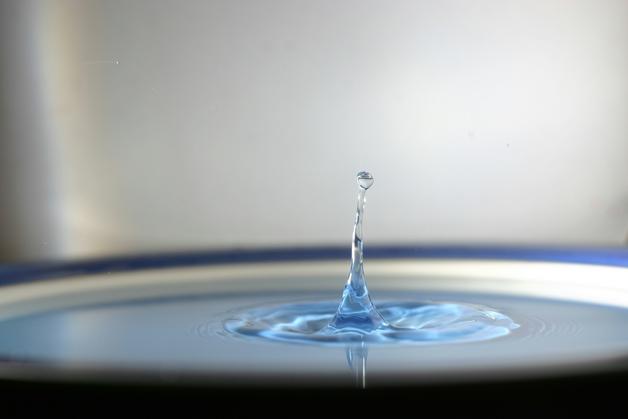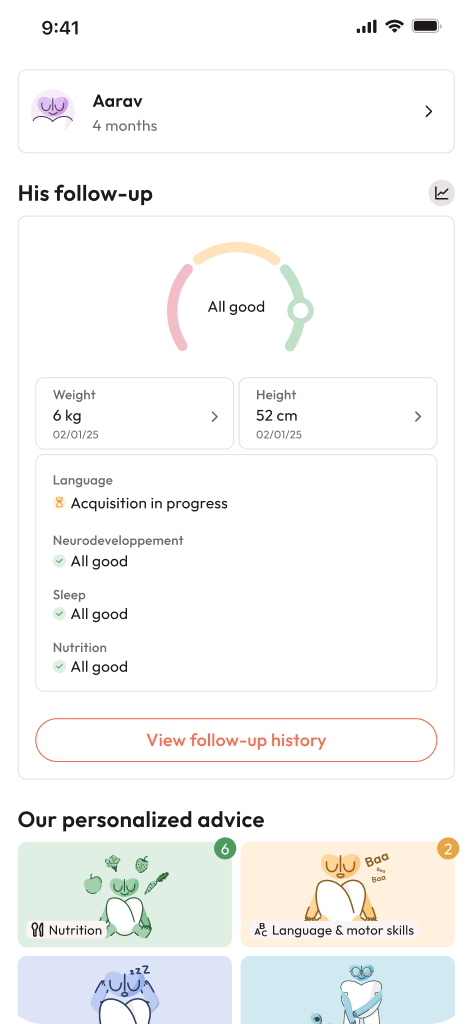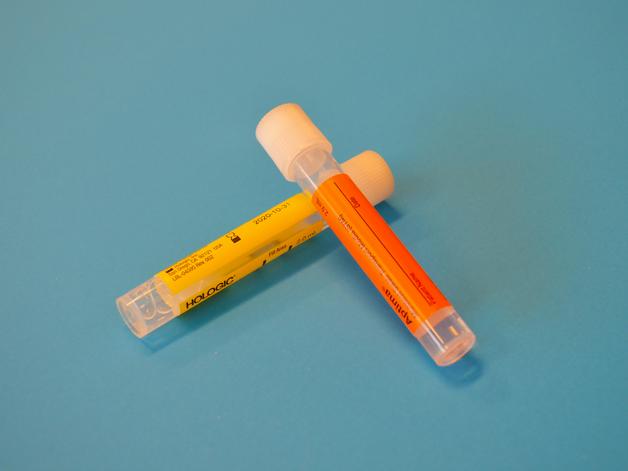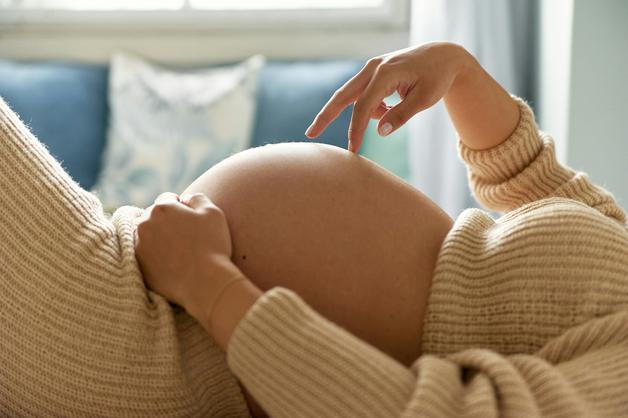Swollen feet after a stroll in the evening, rings feeling tight by afternoon, sometimes even the face appearing puffier after a restless night—pregnancy water retention tends to creep in, raising a flurry of questions for many parents-to-be. Why does this swelling appear so suddenly? How much is normal? Could something be wrong if it feels excessive or only affects one leg? These worries, sometimes subtle and sometimes sweeping, reflect very real physical changes during pregnancy. Discover precise explanations for pregnancy water retention, untangle what is normal and what deserves a doctor’s urgent attention, and find practical strategies—both lifestyle and dietary—to regain comfort. Support, accessible science, and assurance: you will find all of this for your journey through pregnancy water retention.
Understanding Pregnancy Water Retention: From Body Evolution to Warning Signals
What Exactly Is Pregnancy Water Retention?
Imagine your body, suddenly tasked with nourishing and protecting not one, but two lives. To achieve this, the system ramps up blood and body fluid volume—at times as much as 30–50% more than usual. This shift ensures a steady supply of nutrients to the baby but also leads to edema, the technical term for swelling observed in the lower legs, ankles, feet, and occasionally hands and face. Edema does not always feel alarming—it can be a simple side effect of your transforming physiology. Yet, its presence during pregnancy is so widespread that nearly half of all pregnant individuals experience some degree of this water retention.
Why Does Pregnancy Water Retention Develop?
The origins are as varied as they are intertwined. Progesterone—that famous hormone—relaxes blood vessels, which slows down the return of blood to the heart. The growing uterus, meanwhile, presses squarely against pelvic veins and the inferior vena cava (the main vein in the lower body), hampering circulation from the legs upwards. Blood, carrying additional fluids, shifts some of that burden into the tissues, manifesting as swelling. Add to this equation the effect of standing for long periods, hot weather, or salty snacks and the legs readily accumulate more water at the day’s end.
When Are Swelling and Edema Most Noticeable?
Pregnancy water retention often sets in around the second trimester. By the third trimester or after a stretch of standing or sitting, swelling may become far more pronounced. You might notice those familiar marks on your ankles after taking socks off late in the evening or the slight heaviness after a walk to the market. While patterns may vary from person to person, swelling that develops gradually and eases with rest or elevation is usually benign.
Recognising Red Flags—When Should Parents Worry?
Harmless? Most of the time, yes. But some scenarios require immediate medical attention:
- Swelling that is sudden, severe, or rapidly gets worse—especially in the hands or face
- Puffiness isolated to a single leg or limb
- Swelling paired with pain, heat to the touch, or redness
- Additional symptoms such as persistent headache, visual changes (flashing lights, blurred vision), high blood pressure, abrupt weight gain, or shortness of breath
These signals can herald complications like preeclampsia or deep vein thrombosis (DVT), where prompt diagnosis is paramount.
Causes and Influencing Factors of Pregnancy Water Retention
How Pregnancy Changes Kickstart Fluid Accumulation
Blood volume balloons. Veins soften under hormonal sway. Mechanical pressure from the uterus slows return flow in pelvic veins—especially the inferior vena cava. All this means water skews towards the lower limbs, pushing against the tissue and leading to obvious swelling as gravity takes over.
The Roles of Salt, Water, and Kidney Performance
Yet, hormones alone are not the full story. Aldosterone signals the kidneys to retain sodium (and thus water), while inefficient kidney filtration slows the clearing of excess fluid. Consuming too much salt (think salted crisps or pickles), skipping potassium-rich foods (such as banana or sweet potato), and not drinking enough water can amplify swelling. Curiously, dehydration backfires—the body conserved even more water in response.
Lifestyle and Medical Triggers
Long periods of inactivity (too much time standing or, paradoxically, sitting), hot and humid days, restrictive clothing, or even shoes without proper arch support—all play their part. Some carry a genetic tendency for venous insufficiency. Others experience swelling related to underlying conditions like kidney disorders or peripartum cardiomyopathy, accentuating the importance of discussing unusual symptoms with a care provider.
Symptoms and Areas Most Commonly Affected
Spotting Pregnancy Water Retention: What Should You Watch For?
Look for soft, symmetrical swelling—typically at the ankles, feet, and lower legs. The skin may look stretched, almost shiny. Sometimes, after pressing a finger against the area, a small pit remains—a phenomenon known as pitting edema. Swelling in the hands or puffiness around the eyes after waking is also not uncommon. Non-pitting edema (no indentation) occurs less frequently and suggests other origins.
When the Symptoms Shift
Does it feel worse after a day at work or in the summer heat? Does elevating your feet offer relief? Because classic pregnancy water retention fades with rest and worsens with activity, understanding timing and triggers helps to distinguish it from more dangerous conditions.
Evaluation by Healthcare Professionals: What to Expect
Medical History and Precise Assessment
Doctors dig deeper: When did the swelling begin? Is it one-sided? Is there associated discomfort, headache, or vision changes? They will check blood pressure, test urine for proteinuria, and closely observe symptoms. Blood work can reveal anemia, low platelets, or early signs of complications like HELLP syndrome.
When Imaging or Further Testing Becomes Necessary
A Doppler ultrasound scans for blood clots if one limb looks red, warm, and swollen. Echocardiography or chest imaging may follow if cardiac involvement is suspected. Rapid weight gain or combining swelling with other symptoms triggers comprehensive investigations—timely action can prevent severe outcomes.
Pregnancy Water Retention: Harmless or Harmful?
The Benign Course
Most swelling during pregnancy is bilateral, gradual, and relieves after birth. It does not signal harm to the baby or parent.
The Complications Worth Watching For
But, where swelling races across the body, arrives with a headache, blurred vision, or chest pain, conditions like preeclampsia, DVT, or rarely, peripartum cardiomyopathy must be ruled out. DVT, for instance, requires swift treatment to avoid a clot travelling to the lungs.
Ignoring Warning Signs: Potential Risks
Lingering or one-sided swelling, combined with other alarming symptoms, can eventually trigger organ problems, severe clotting issues, or fetal compromise. Prompt reporting to healthcare keeps both parent and baby safer.
Practical Prevention and Lifestyle Guidance
Move it or Lose it: Why Gentle Activity Is Key
Simple movement reboots venous circulation. Even walking to fetch water, doing light stretches, or prenatal yoga can help. If prolonged standing or sitting is unavoidable, ankle flexes and frequent position switches assist circulation.
Rest Smart: Elevate and Sleep Left
Elevate your legs with a pillow, avoid sitting cross-legged, and try sleeping on your left side to relieve pressure on your largest veins. This enhances blood return and reduces swelling.
Dress for Circulation, Not Compression
Opt for loose, breathable fabrics and shoes with proper cushioning. Compression stockings, when prescribed, can provide targeted relief.
Monitoring, Check-ups, and Early Reactions
Attending regular prenatal care appointments ensures that concerning trends (e.g. rapid weight gain or signs of high blood pressure) are detected early, improving outcomes for both parent and baby.
Diet and Hydration: Practical Strategies to Limit Swelling
The Power of Proper Hydration
Counterintuitive but true: drink at least 1.5–2 litres of water a day. This aids the kidneys in ridding the body of extra sodium, facilitating smoother fluid balance.
Manage Salt, Embrace Potassium
Trimming salty packaged foods, reducing table salt, and avoiding processed snacks can make a noticeable difference. Meals rich in potassium—potato, beans, bananas—and fibre support the kidneys and overall vascular health.
Caffeine and Moderation
Consider keeping caffeine intake modest. While tea might soothe the senses, too much could hamper efforts to keep swelling at bay.
Easy Home Remedies for Daily Comfort
Compression Stockings and Well-fitted Footwear
Medical-grade stockings (if recommended), combined with non-restrictive shoes, counteract gravity’s effects by encouraging blood flow upward from the toes.
Massage, Cooling, and Nature’s Relief
A gentle massage, leading upwards from the soles towards the knees, stimulates circulation and can be deeply relaxing. Cool—not icy—foot baths or showers, especially after a hot day, promote vascular comfort through vasoconstriction.
Traditional Supports and Natural Foods
Hydrating foods—cucumber, watermelon, citrus—fit seamlessly into your diet. Some herbal teas have long histories of being used to support urination but always check with your doctor before trying new remedies during pregnancy.
Leg Elevation, Rest, and Gentle Outdoor Activities
Spending time with legs elevated or walking barefoot on clean grass can improve comfort, providing both physical and mental relaxation.
Complementary Therapies
Homeopathy or supplements are occasionally discussed. Certain remedies (like Natrum Sulfuricum) are popular, yet should only be started after a chat with a medical professional to avoid adverse effects.
Monitoring, Red Flags, and When to Act Without Delay
Routine checks of blood pressure, urine (for protein), and ongoing weight remain basic but essential. If new symptoms arise—marked fatigue, visual changes, persistent swelling, pain, or fever—immediate consultation is warranted. Timely attention minimises risks for mother and child alike.
Recovery After Delivery: What to Anticipate
Natural Recovery
Swelling can linger for several days to two weeks after the birth, as kidneys step up fluid elimination. Normal skin tone and comfort should gradually return.
Supporting Your Body
Keep up a good fluid intake, gentle movement, and even leg elevation in the initial postpartum days. Continue salt moderation and potassium-rich meals, and maintain supportive footwear and, where recommended, compression stockings.
If swelling persists, intensifies, or appears with new symptoms like fever or significant fatigue, medical review is the best step.
Key Takeaways
- Pregnancy water retention is one of the more visible—though usually mild—signs of the remarkable adaptations during pregnancy.
- Swelling most often targets the feet, ankles, and legs, due to changes in blood flow and hormonal effects like extra progesterone and aldosterone.
- Simple daily activity, hydration, smart dietary choices, and changing positions throughout the day can reduce swelling.
- Severe, rapid, or asymmetric swelling, particularly with headaches, blurred vision, or chest discomfort, are warning signals worth urgent attention.
- Most pregnancy water retention melts away within days or weeks after childbirth.
- There’s strong reassurance in knowing that regular monitoring and proactive communication with a health professional keeps both parent and baby safe.
- Personalised support, information, and free health questionnaires for your child can also be accessed anytime via the Heloa app.
Questions Parents Ask
When does pregnancy water retention usually start?
Pregnancy water retention often appears from the second trimester onwards. As the blood volume climbs and hormones adjust circulation, parents may observe swelling in feet, ankles, or hands. If it creeps in earlier, accelerates quickly, or feels unusual, sharing these changes with a healthcare provider brings extra reassurance.
Are there gentle ways to relieve water retention safely during pregnancy?
Of course. Regularly elevating your feet (especially in the evening), opting for soft, roomy shoes, and keeping well hydrated all help ease edema. Contrary to popular belief, drinking enough water encourages fluid balance. If your legs tire after standing, brief walks or gentle stretching stimulate better blood return. Pregnancy-safe compression stockings, prescribed by your care provider, are also worth considering.
Is water retention in pregnancy dangerous for the baby?
Mild, gradually developing swelling—especially in the lower limbs—is simply your body adapting. It is not linked to danger for the baby. What deserves fast attention? Sudden, intense, or one-sided puffiness, sometimes joined by headache, vision changes, or chest discomfort. Such symptoms should always be urgently checked, ensuring prompt management and peace of mind for both parent and child.
Further reading:









